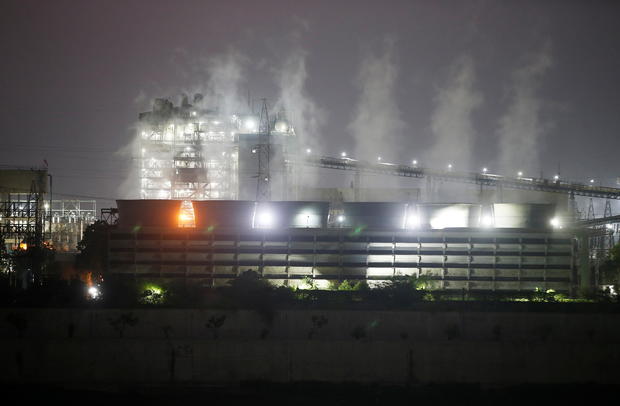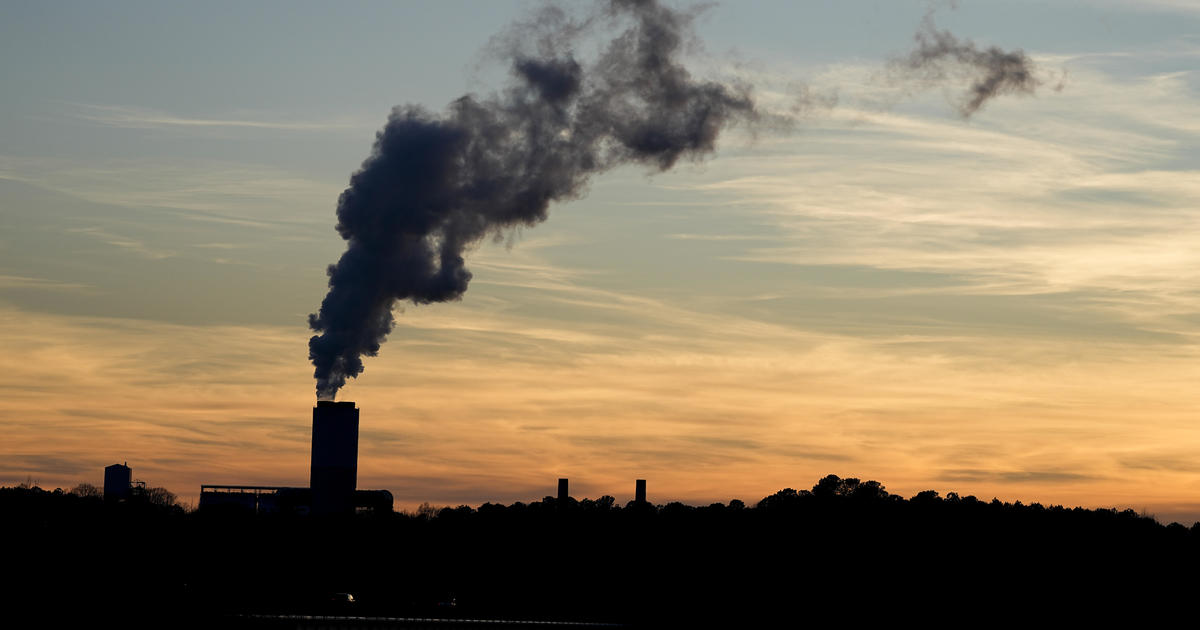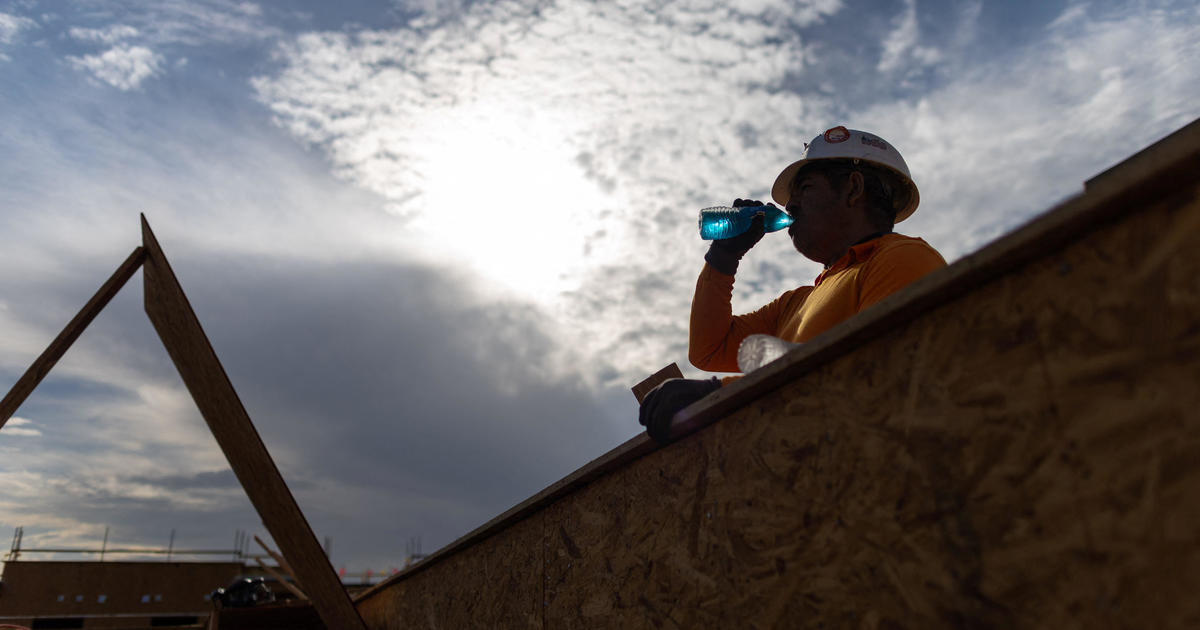India making strides toward clean energy, but quitting coal isn't easy
New Delhi — India could face significant power cuts within days. Government data show that, as of Thursday, 116 of India's 135 coal-fired power plants had nine days' or less worth of coal left in their stocks, and 84 of the plants had less than five days' worth of the fuel left to burn.
Several Indian states, including the one encompassing the capital city of New Delhi, have raised concerns with the federal government and warned of possible power blackouts. Some states have already seen rolling power outages as plants cut their output in anticipation of coal shortages.
Coal addiction
The specter of power cuts has highlighted the extent to which India, the world's second-most populous nation, still relies on coal for energy — 70% of India's electricity comes from coal-fired thermal power plants.
Coal burning is one of the biggest sources of carbon dioxide emissions. It is considered the most environmentally harmful fuel to burn for power generation.
India is not alone, however. China tops the list of coal power producing countries, followed by India and the United States.
From coal to clean
India is Asia's third largest economy, and the government has relied heavily on coal to keep that economic engine cranking as it tries to lift millions more people out of poverty.
The country has already made significant progress in transitioning from fossil fuels to cleaner energy sources, but experts say there's still a long way to go, and it won't be an easy shift.
"The coal retirement is not happening at a fast pace given that the overall demand is huge. India, being a big country with the total coal capacity of more than 200 gigawatts (GW), it does not have the luxury to announce that it will phase out all coal by 2030 or 2040," Vibhuti Garg, an energy economist at the Institute for Economics and Financial Analysis (IEEFA), told CBS News.
In 2015, as part of the Paris climate agreement, India agreed to increase its installed electricity capacity from clean sources like solar, wind, hydroelectric and nuclear to 40% by 2030. It managed to hit that target this year — nine years ahead of schedule.
As part of its plan to reduce coal dependency, India now plans to increase the proportion of its green energy production from the current 40% (101GW) to 60% (450GW) by 2030.
To help make that shift, India is making huge investments in solar and wind energy. The country has increased its solar power capacity more than 11-fold over the last five years alone. But it is also looking at other technologies.
Fuel from water
India is also aiming to outpace other countries in the production of "green hydrogen." With the ability to replace fossil fuels in some industries, many hope that green hydrogen — created by using renewable energy and the process of electrolysis to split the building blocks of water — will become a key clean fuel of the future.
Currently the process is too expensive to scale up significantly, but India is investing heavily to change that. At the recent U.N. General Assembly, Prime Minister Modi said his government was working to make India the world's biggest green hydrogen hub.
"For India, investing in green hydrogen will be like leap-frogging," Ulka Kelkar, an economist and climate change researcher with the World Resources Institute, told CBS News. "If India becomes an early mover in this space, it can prove to be a huge advantage in going green faster."
Roadblocks on the green road
Despite its significant achievements, there are some big obstacles on India's road to a greener future. Storage and transmission of renewable energy is one of them.
Right now, India has sufficient capacity to distribute and store the limited amount of green energy it is producing. But experts say that as the country ramps up its renewable power generation, storing the electricity will be one of the major challenges — but storage technology is advancing, too.
"Beyond 2024-2025, when the battery storage prices will fall, that's when I feel that, at least in the electricity sector, we will see the share of renewable energy going up more," Garg predicted.
Another hurdle, particularly for solar energy, is the space required. Unlike in China, which has become a leader in solar, empty land is scarce in India.
For India to achieve its target of net zero emissions by 2050, the country would need to devote between about 19,300 and 29,000 square miles of land to solar power infrastructure, and another 5,800 to 7,700 square miles to wind energy, according to estimates by IEEFA.
For now, it's coal
While India is irrefutably working to go green, experts say it will realistically take decades to wean the massive country off coal completely. Right now, several factors are making that problematic.
A global surge in fossil fuel prices and an increase in demand for electricity as India's economy roars back from coronavirus lockdowns are both fueling the current power crisis. The weather hasn't helped, either.
"An extended monsoon (seasonal rains) this year meant that the underground coal mines remained flooded for a much longer time, decreasing the coal production," Aditya Lolla, an electricity policy analyst at the independent climate change thinktank EMBER, told CBS News.
If the government fails to manage the coal shortage, it will have a significant economic impact. Sectors including manufacturing, construction and services could see their growth dip, which could lead to higher prices for Indian consumers – and consumers of Indian-made goods worldwide.
Garg, the energy economist, told CBS News that the government should "immediately ramp up" coal production and "ensure it reaches the power plants at a much faster pace" to alleviate the crisis in the short-term.
It's advice that emphasizes the challenges India's facing as it tries to grow, and go green.




